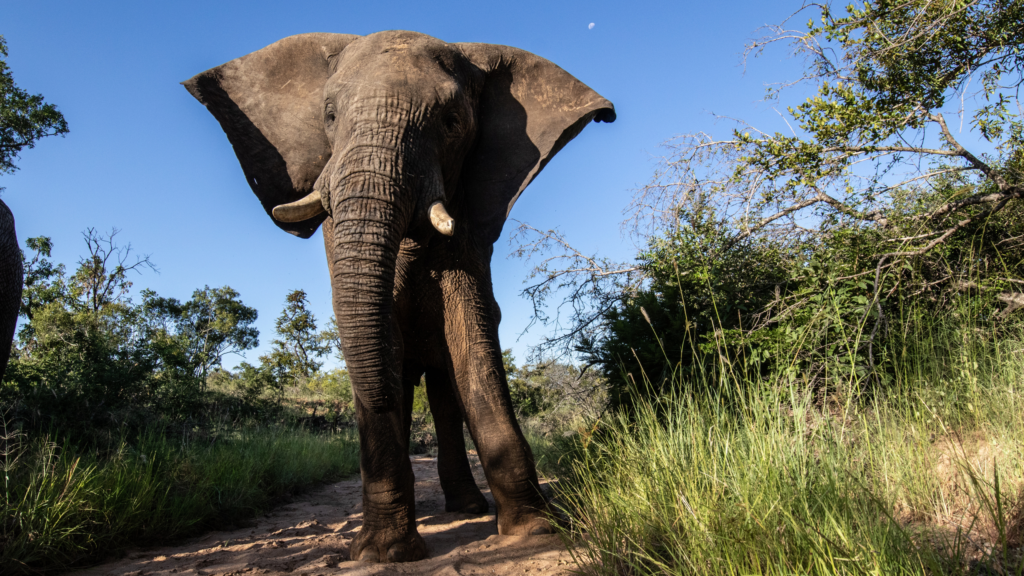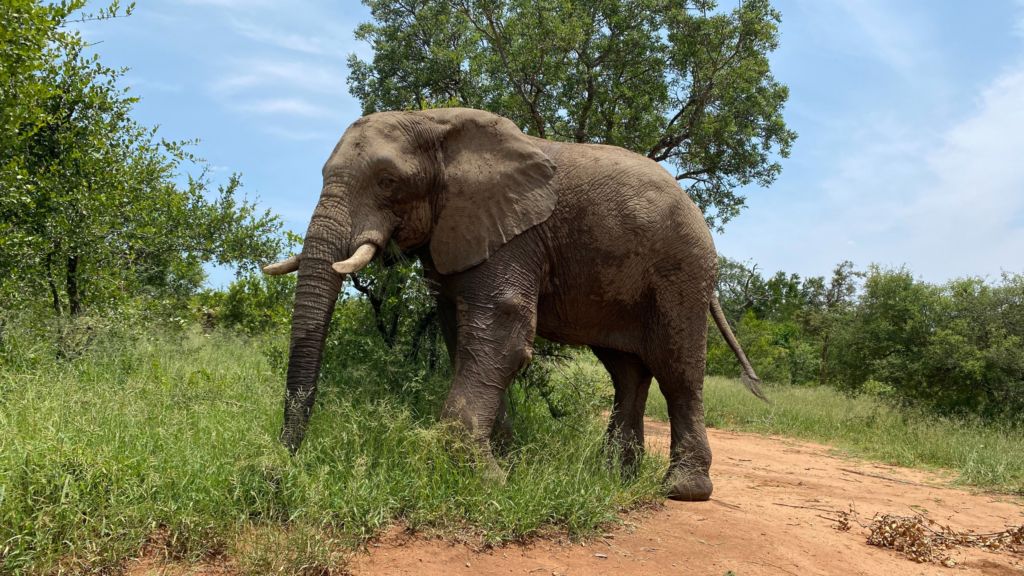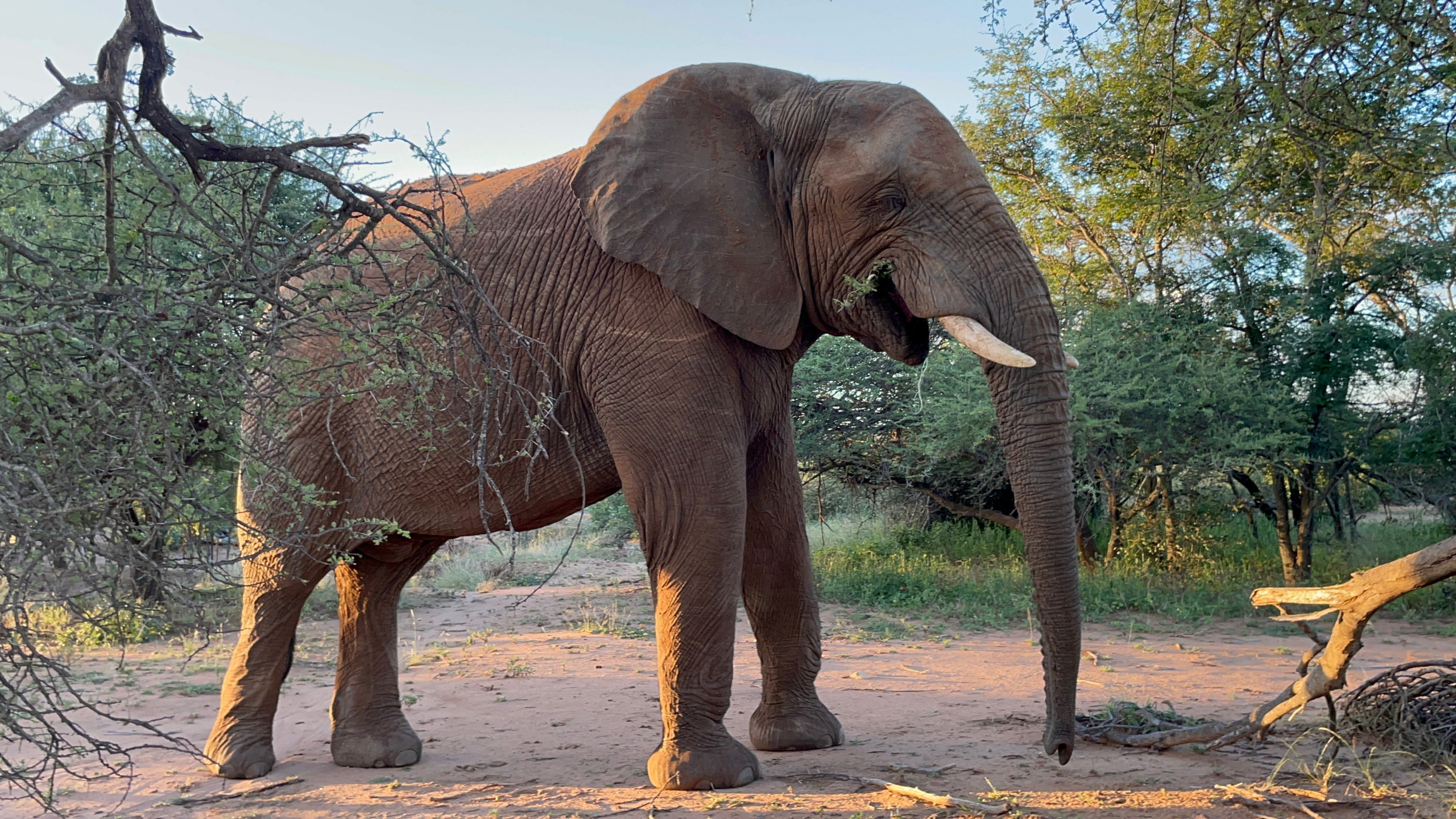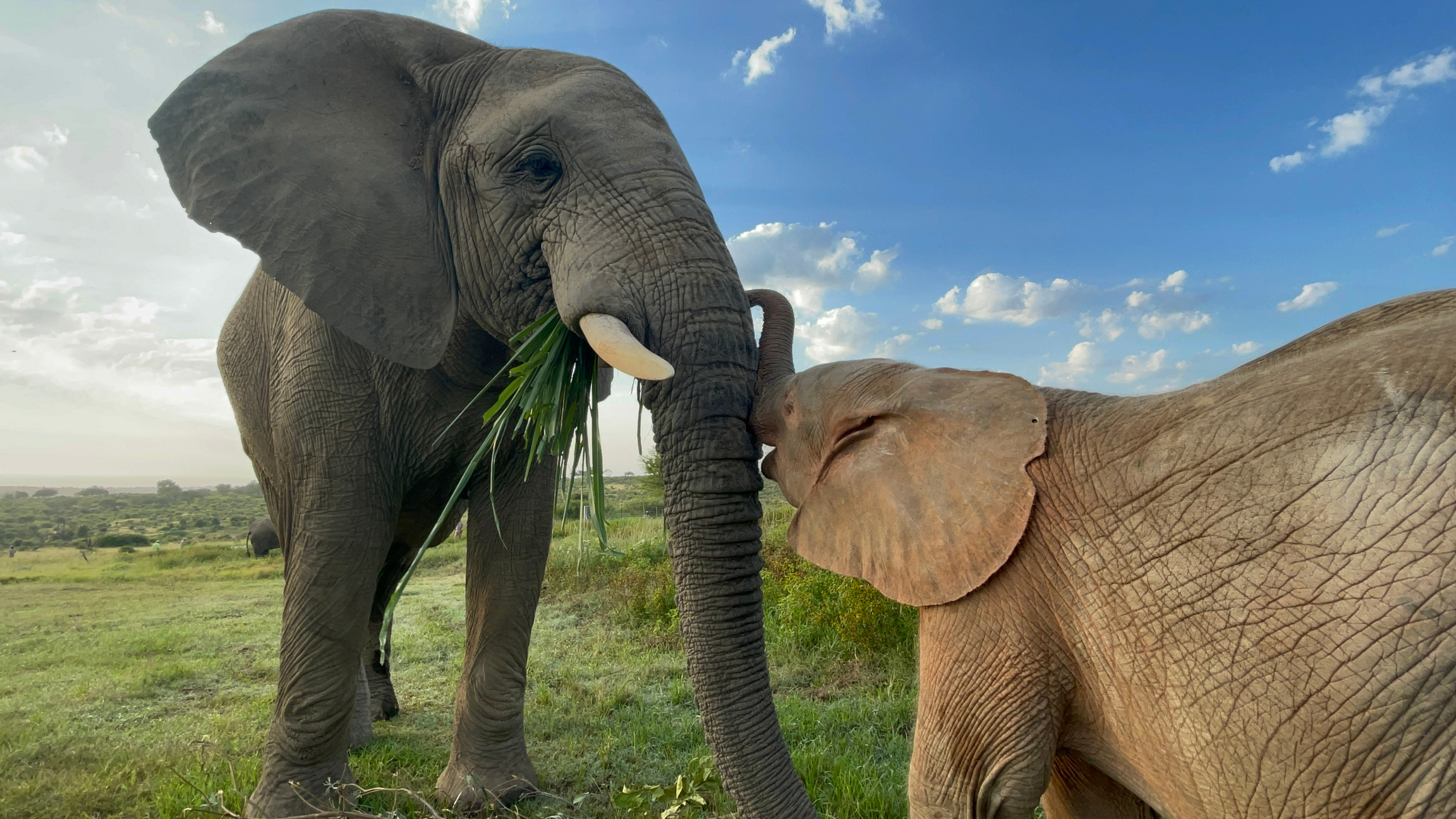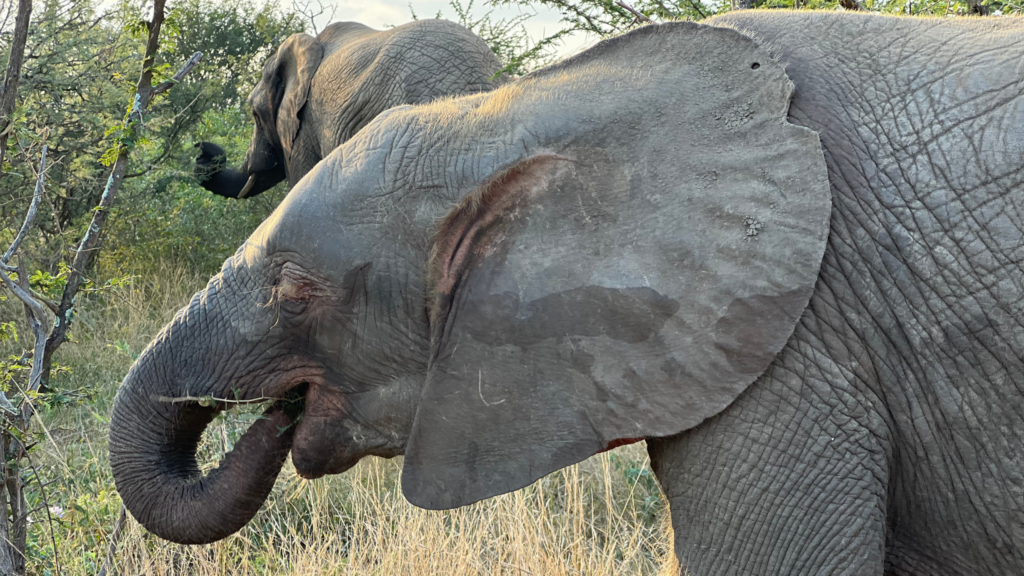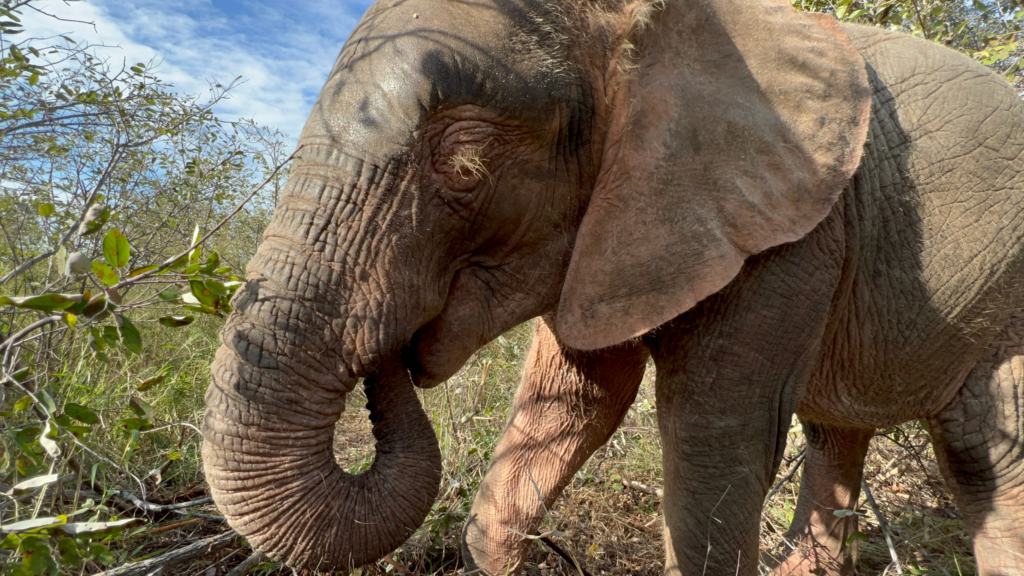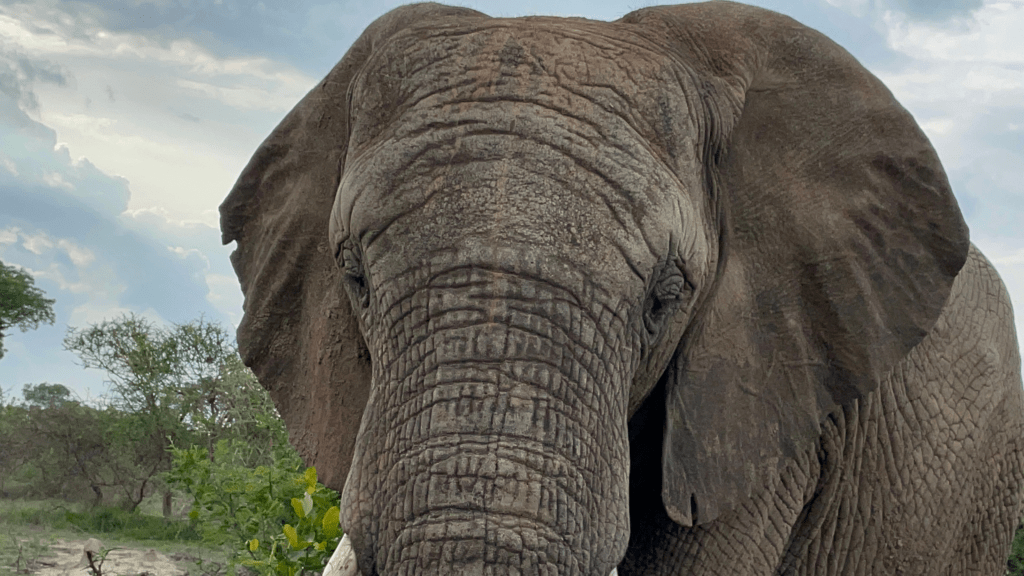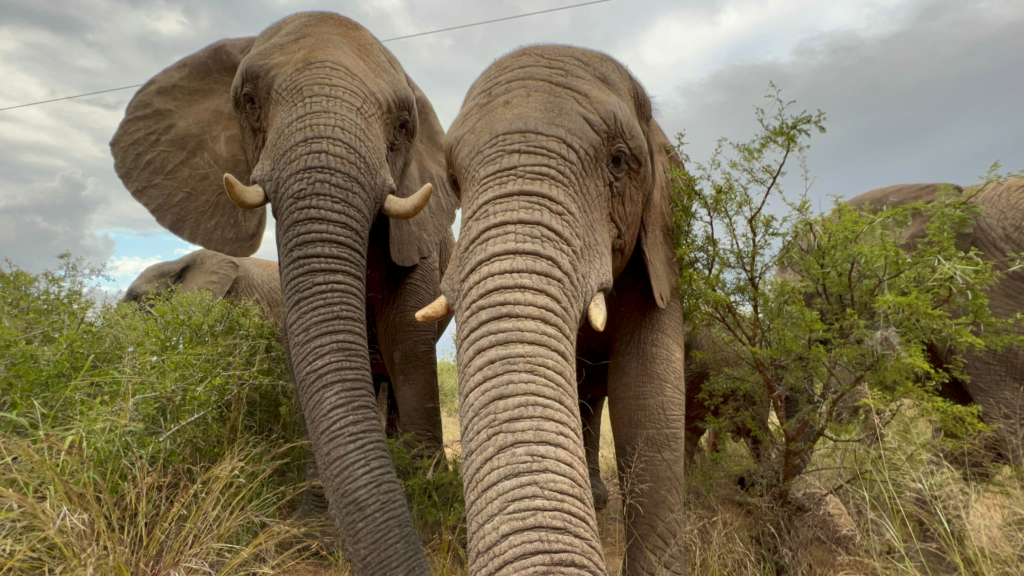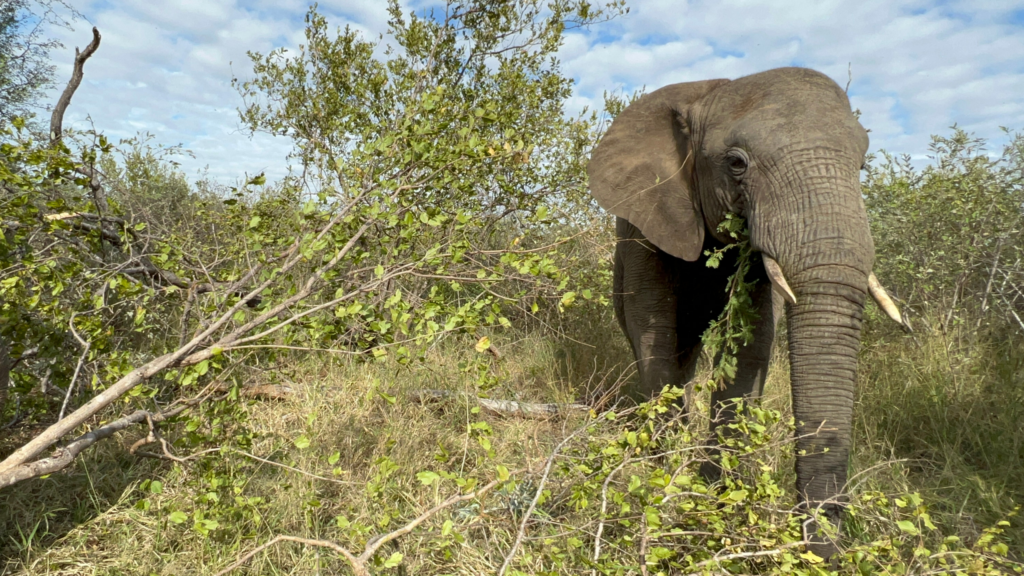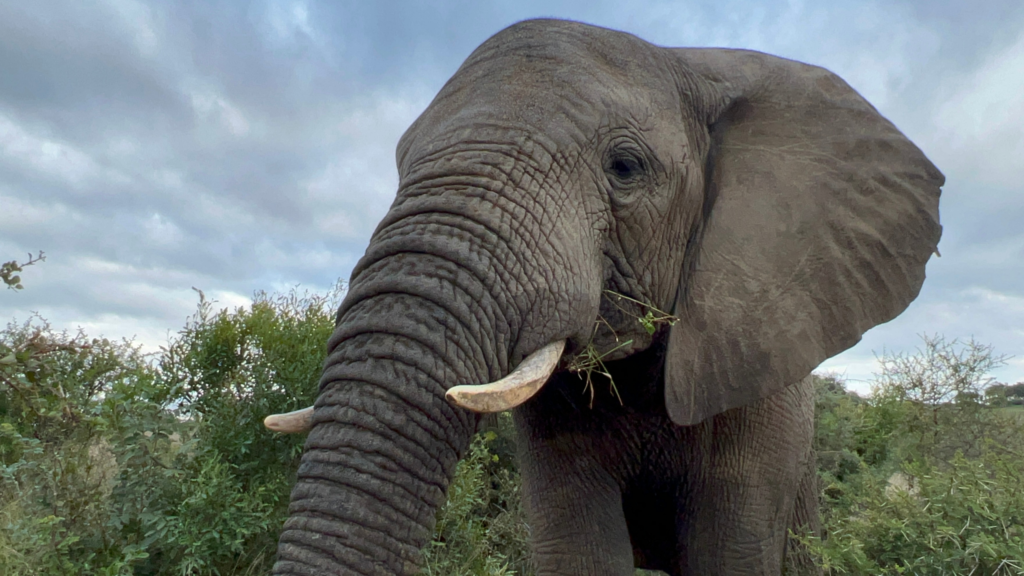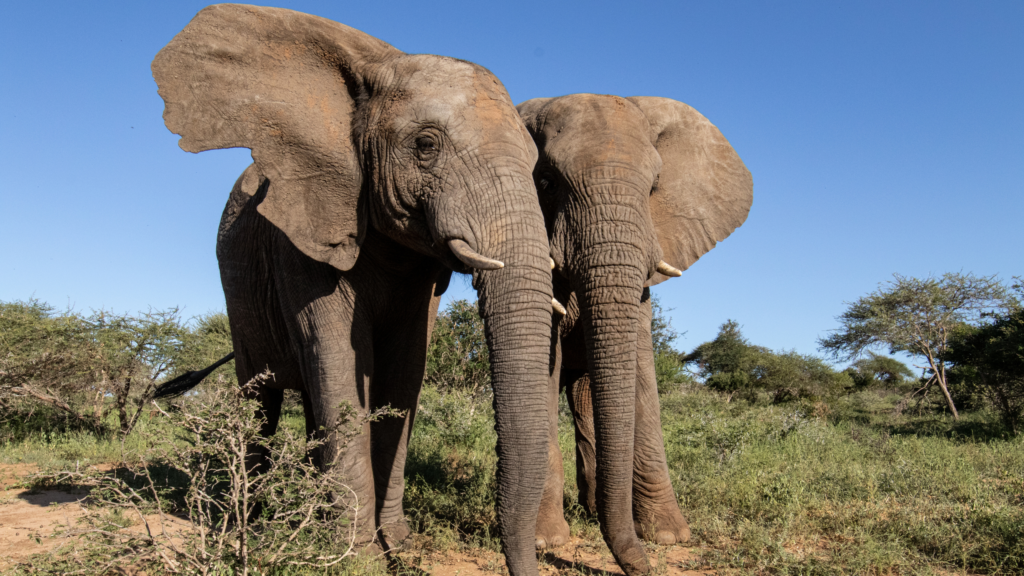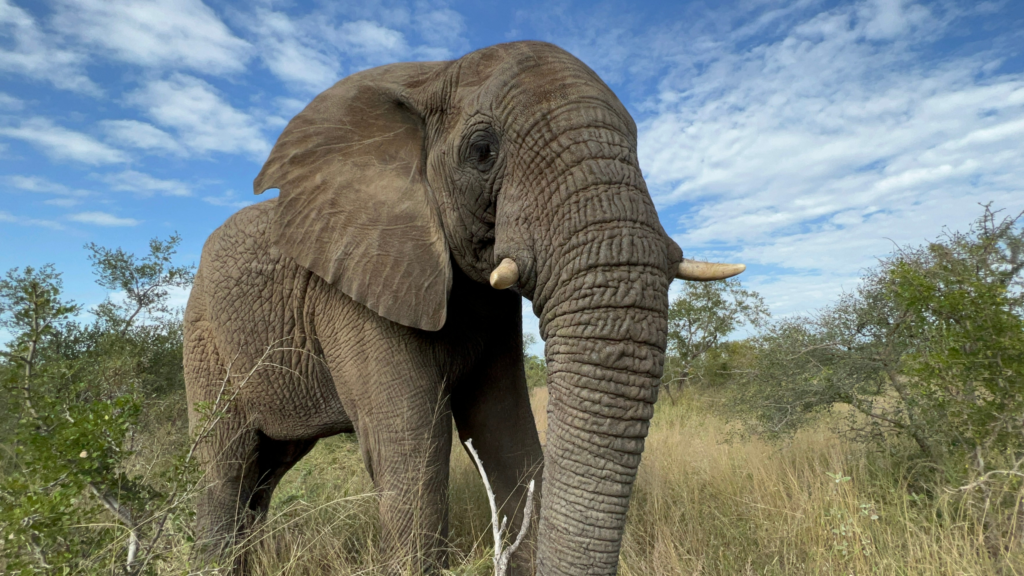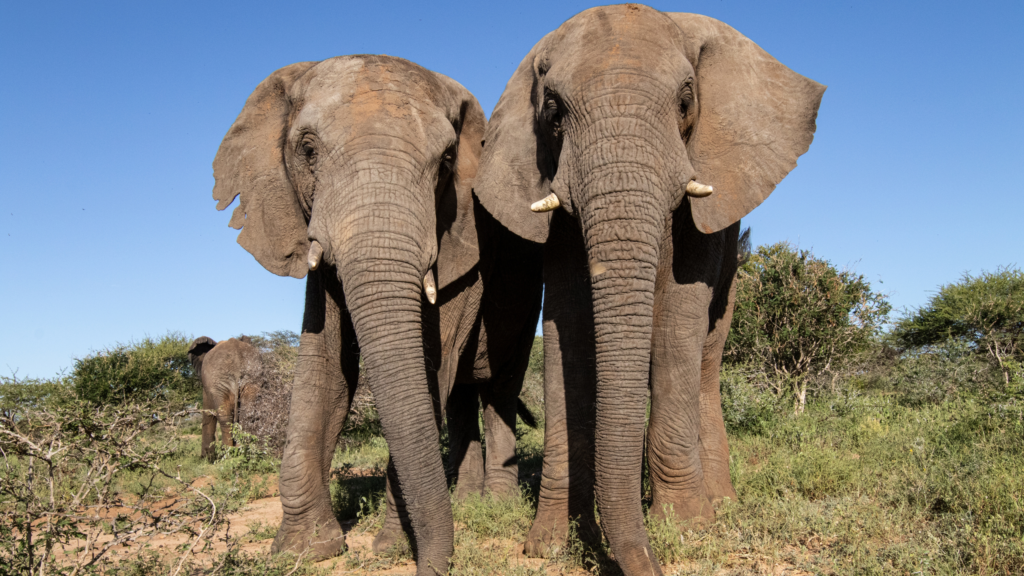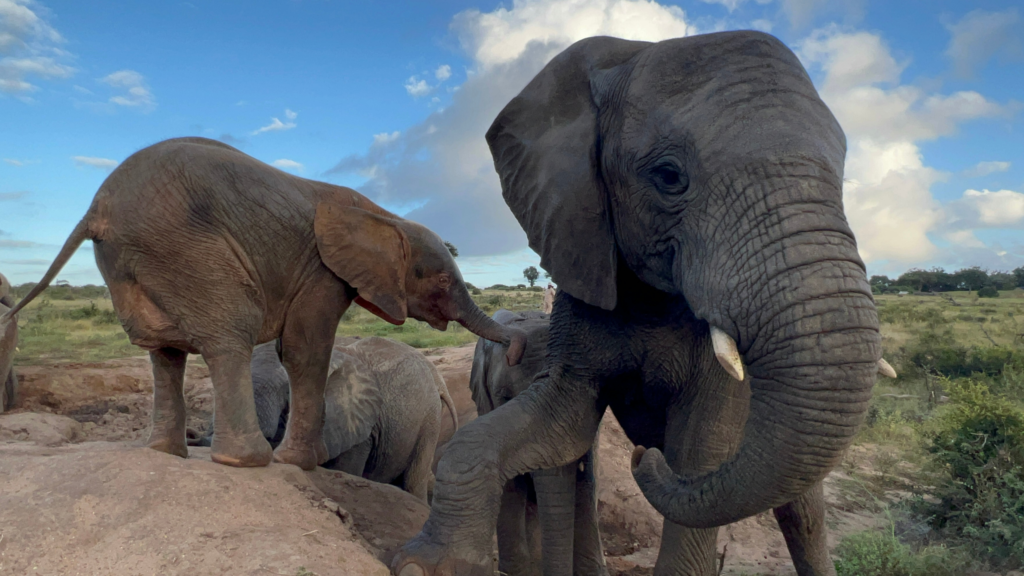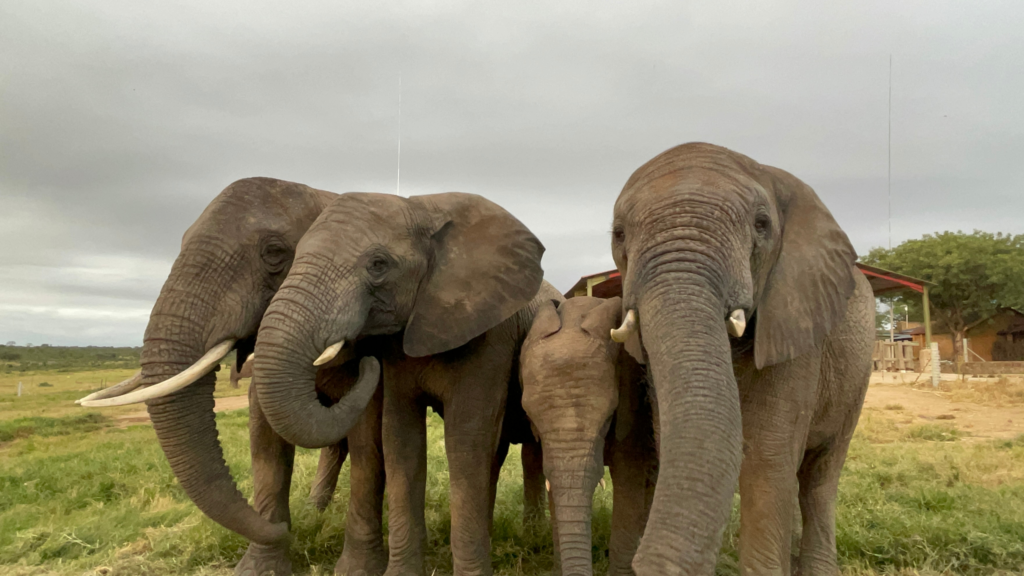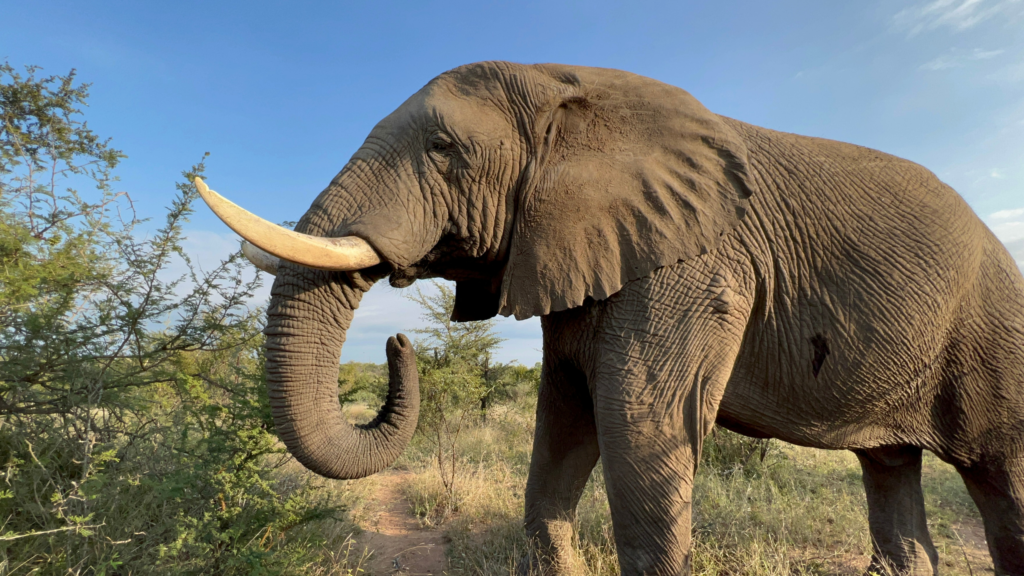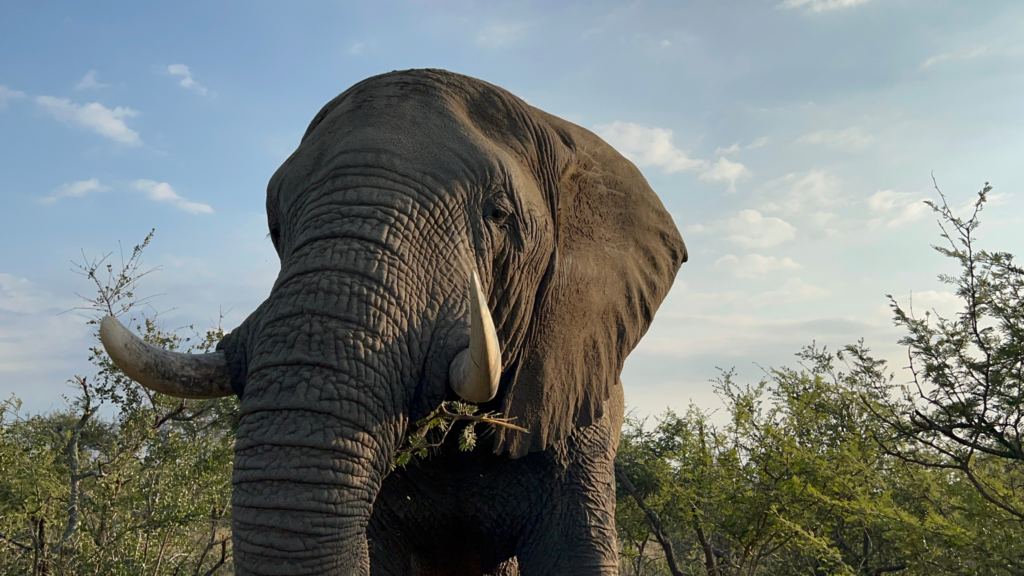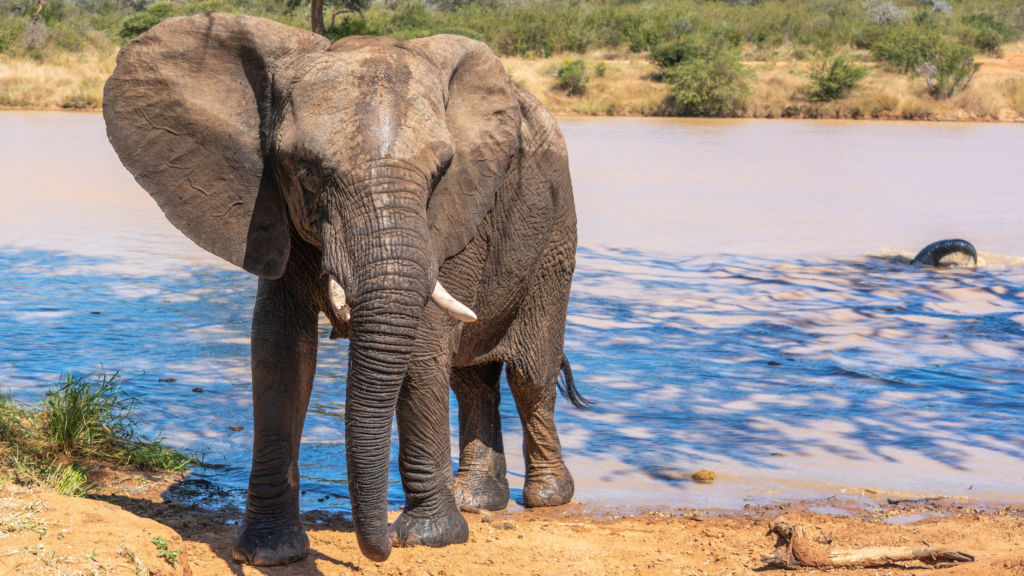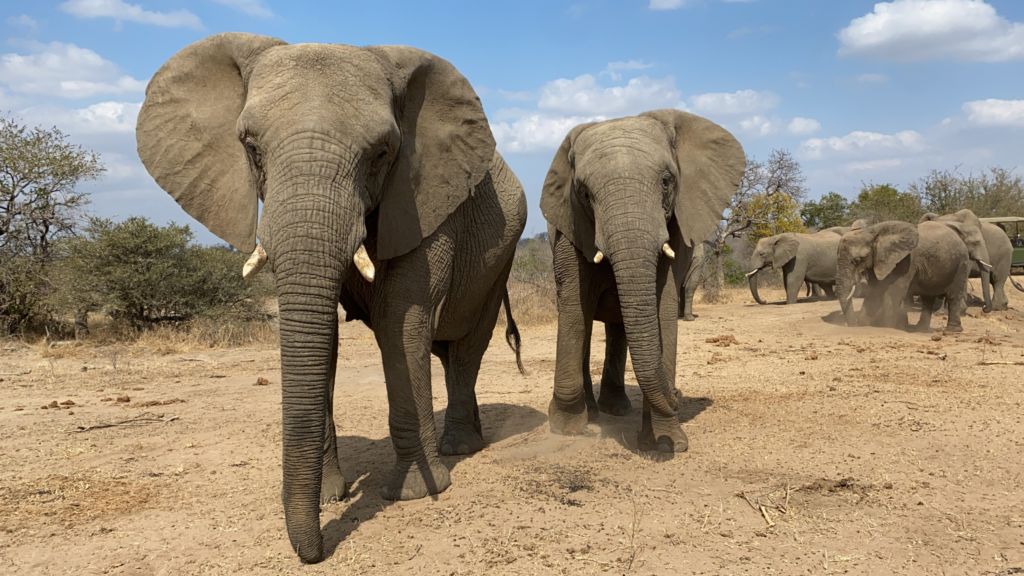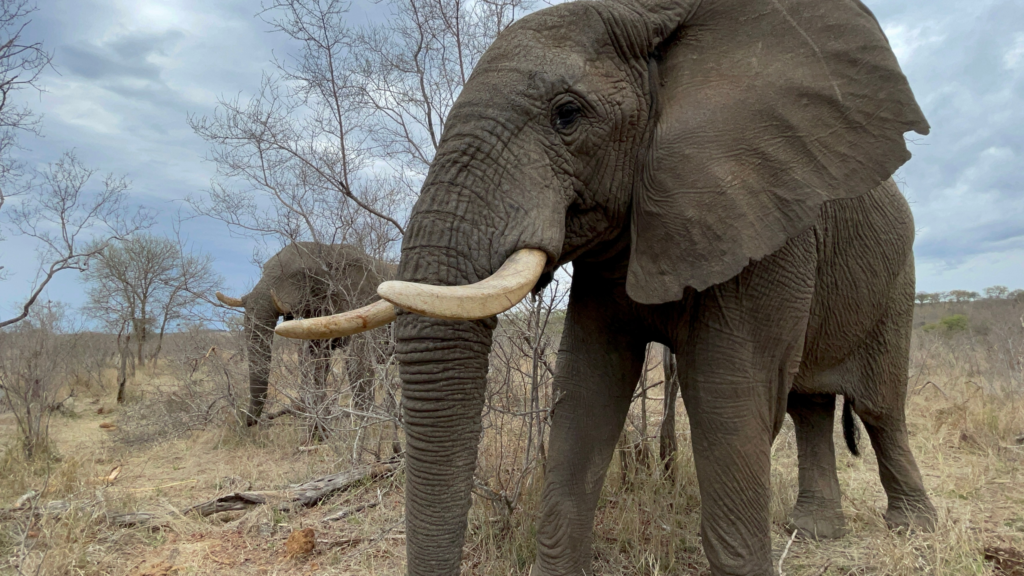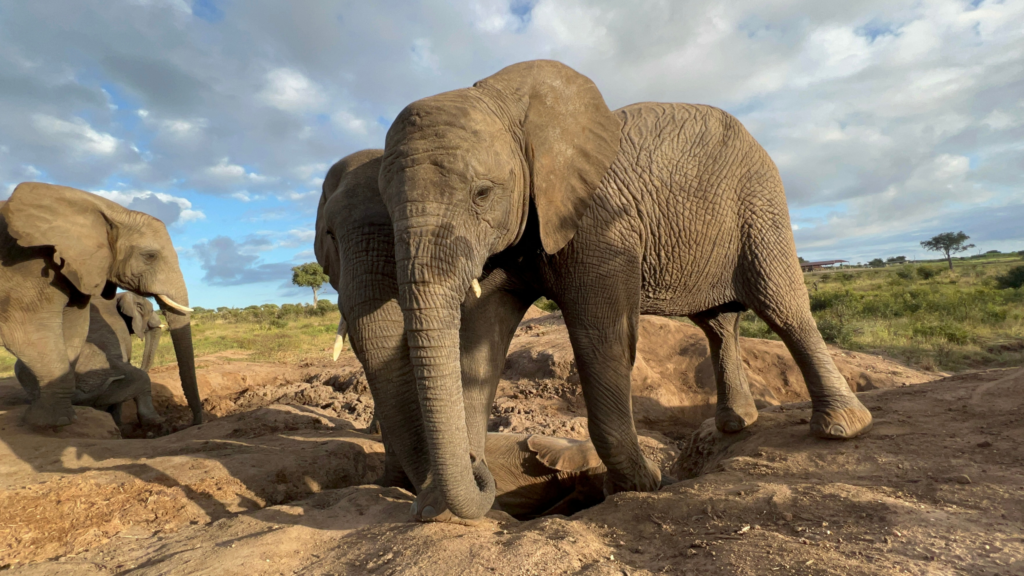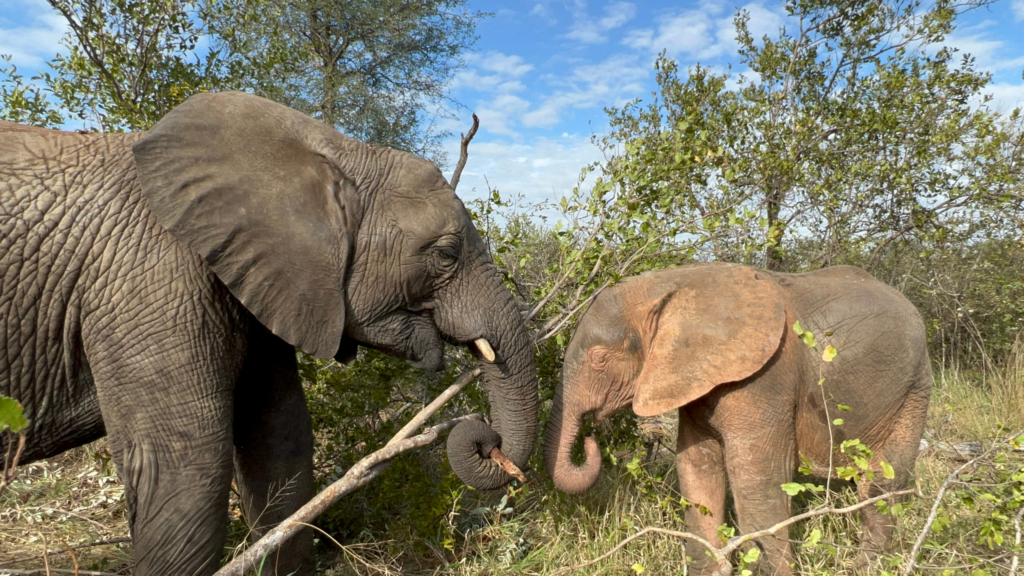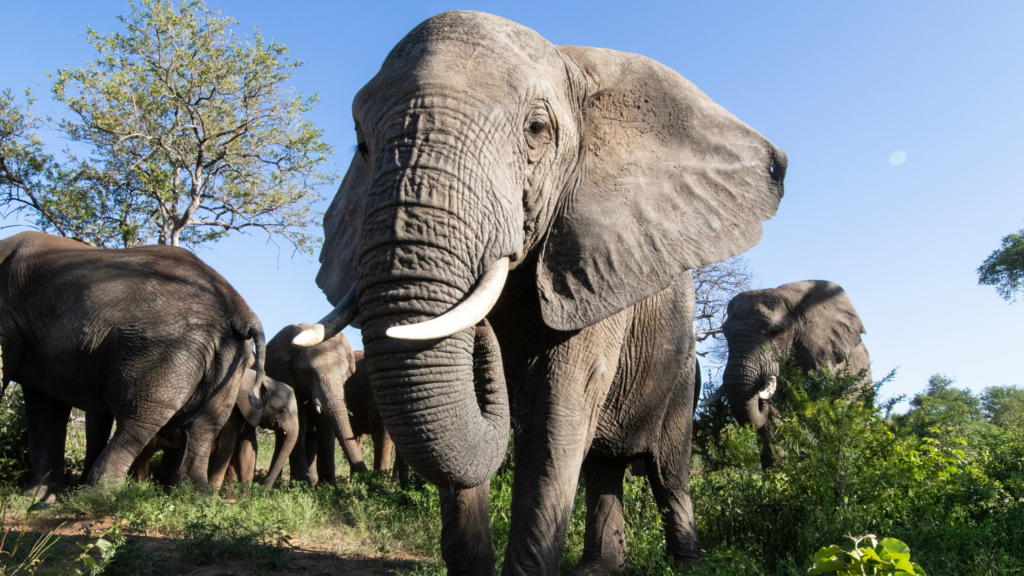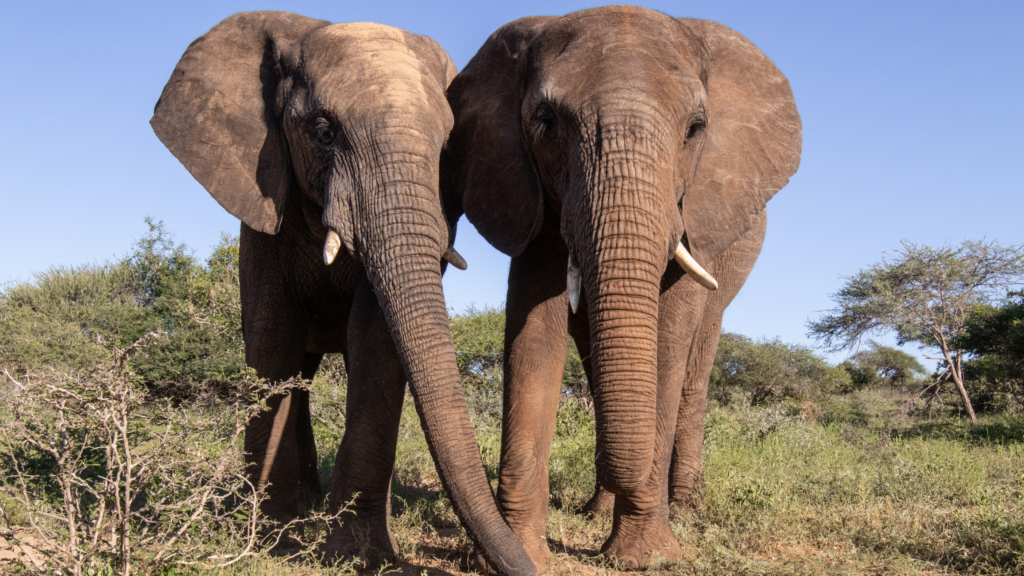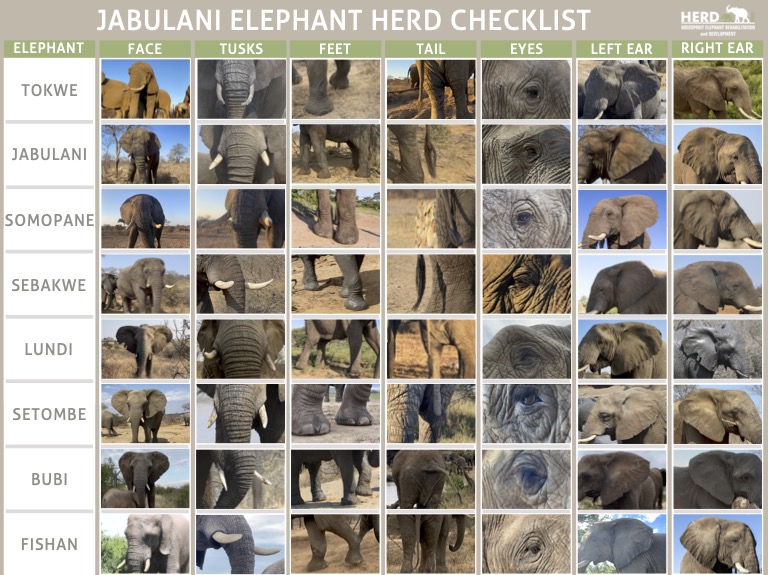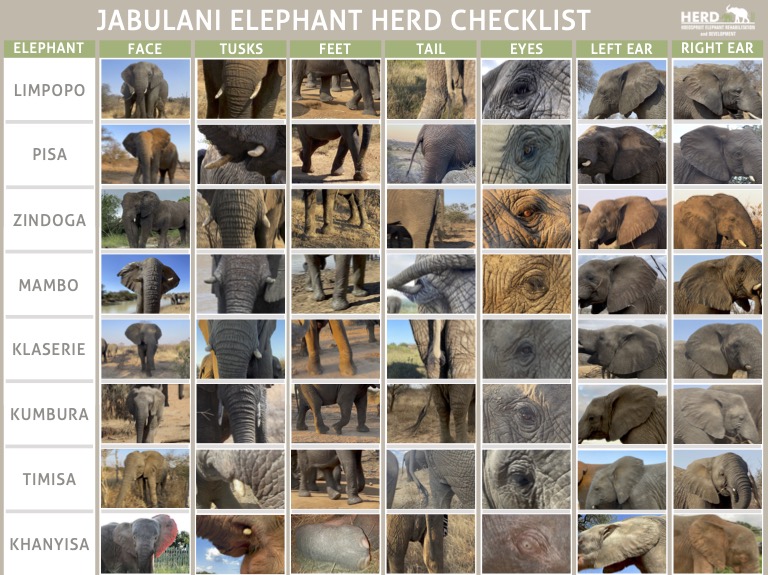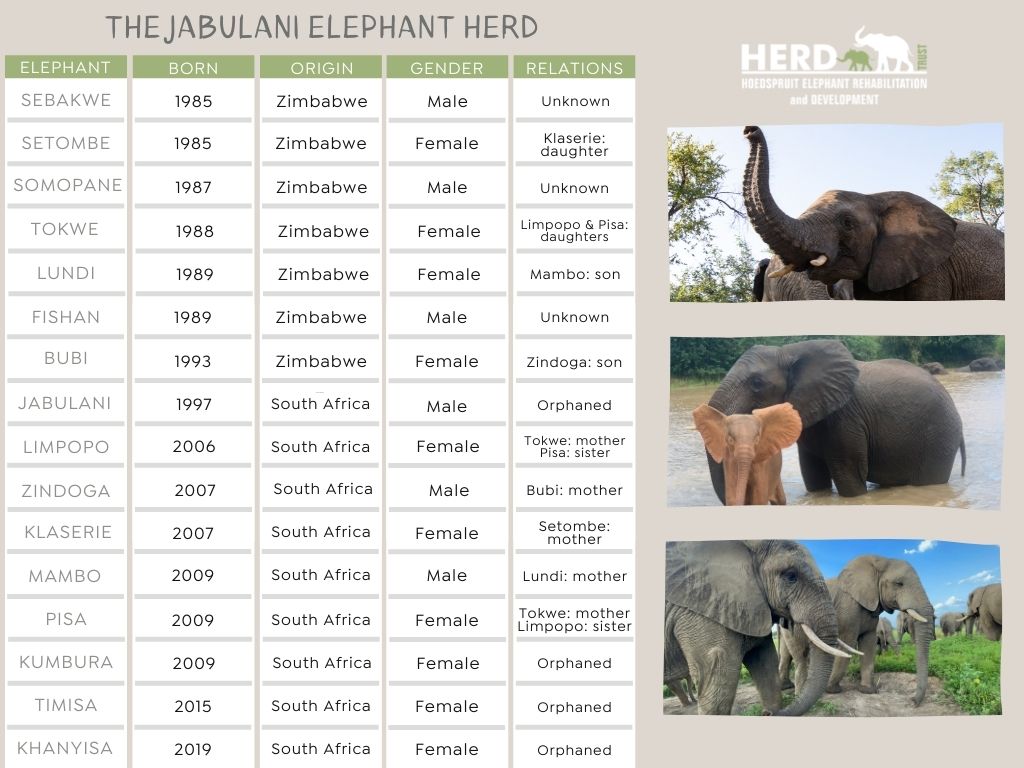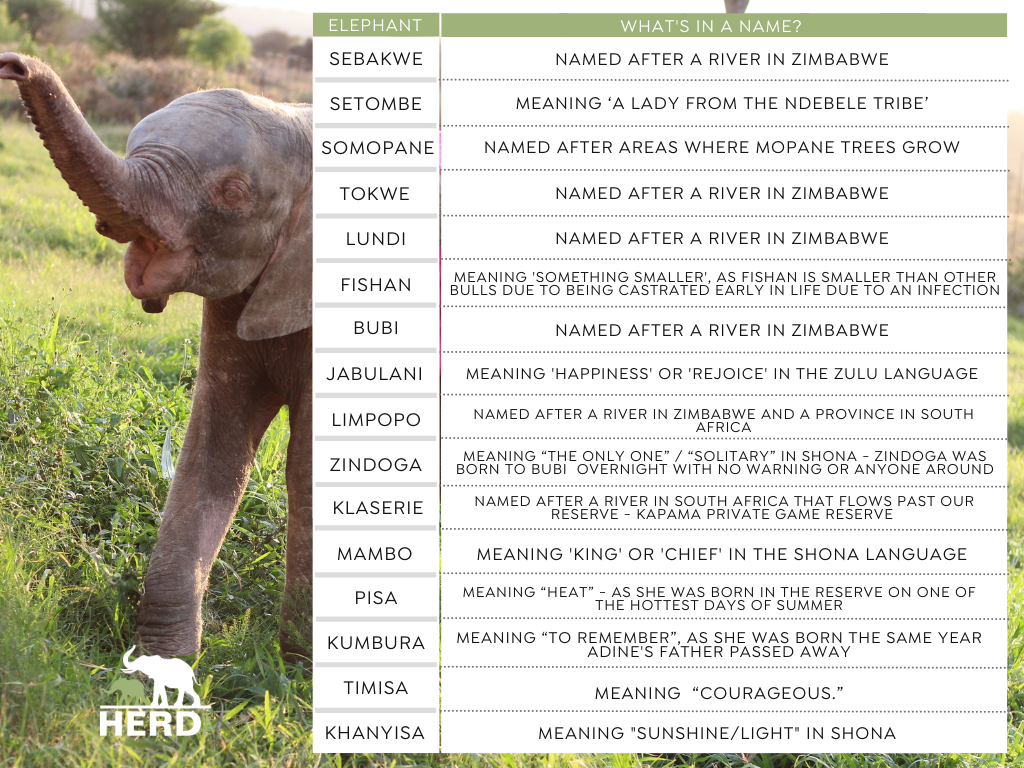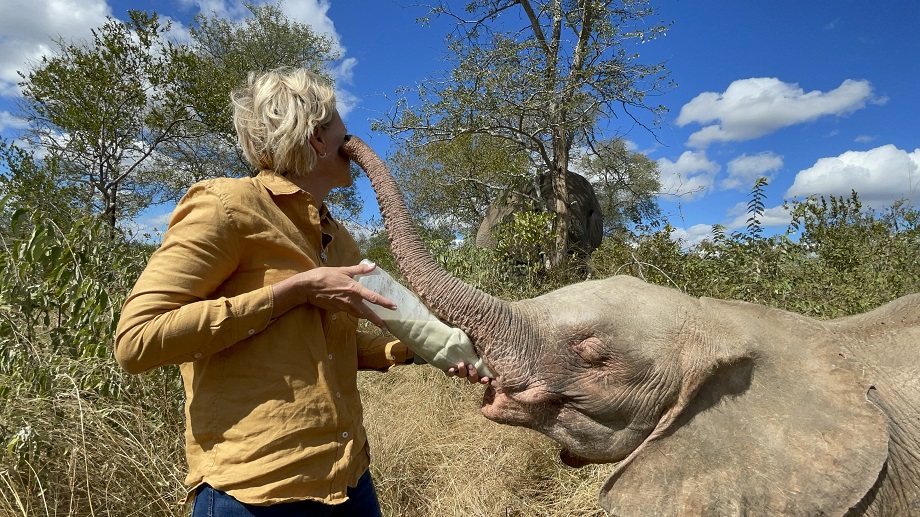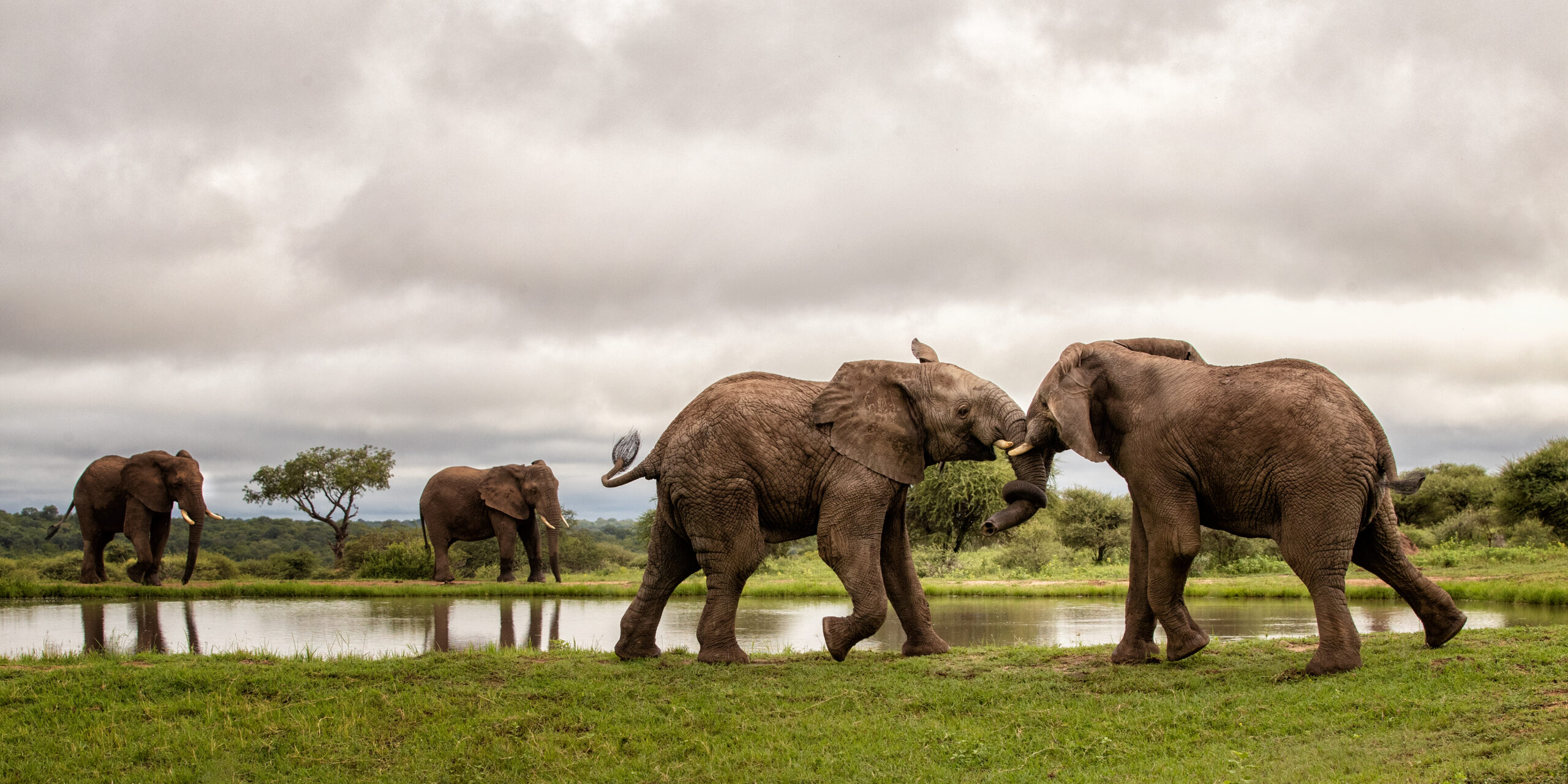There is more than one way to identify the Jabulani herd elephants. You can look at the elephants near them – Setombe is never far from Sebakwe, the allomothers take turns to look after Khanyisa, Mambo is frequently near Sebakwe or Zindoga in order to spar with them, and Kumbura is often following after Khanyisa. You can also look at what they’re doing – Somopane loves to stand still in the middle of waterholes, Pisa almost always walks near the front of the herd, Sebakwe constantly splashes his trunk or a log about in the waterholes, while Jabulani is often off ambling to the side, to a drum of his own. But the easiest way to identify the elephants is to look for their distinguishing features.
What to Look Out For
The best features to look for are tusks and ears, which tend to have very distinct looks. As you get better at identifying the elephants, you can also look at their faces and heads. If you really want to challenge yourself, you can look at their body shapes and sizes.
Tusks
In general, bulls have thicker tusks than cows, and their tusks are widely set and point outward. Elephants tend to use one tusk more than the other, which often results in one tusk looking more worn, whether it be more angled, blunter, or shorter.
Ears
Elephant ears come in many different shapes and sizes. As elephants age, they tend to develop distinct tears or gaps in their ears. Elephants who regularly challenge others or who are quite rowdy often have more such marks. Older elephants are also likely to have more such marks.
Faces and Heads
Young elephants tend to have round heads. As they age, males will continue to have round heads, but females will develop more angular heads. Some elephants have more prominent brow bones than others. Some may even have eye sockets with distinct shapes.
Bodies
Elephants’ body shapes and sizes vary a lot, but generally, cows are smaller in frame and size than bulls. Some elephants may have distinct scars on their body.

The Elephants
Please note: The elephants’ features change frequently and the younger elephants grow speedily. Something like an ear hole can become a tear in a matter of months. This guide is accurate as of June 2022, but an update will likely need to be published next year.
Bubi
Bubi has sharp, slender tusks that aren’t symmetrical – her right tusk points down and her left tusk juts out to the side. She has small ears and from the front, her two ears form a heart shape. There is a triangular gap near the bottom of her left ear, and there are patches of lighter pigmentation on the back of the ear. She has quite a small head and she has prominent brow bones and long eyelashes – the longest eyelashes of all the elephants. She has a round body and she is shorter than the other older cows, because she is a bit younger than them. She has uneven tail hair – one side has very long hair and the other side has almost no hair.
Fishan
Fishan has thick tusks that point outward. His tusks are not as long as Sebakwe or Somopane’s tusks, but they are longer than Jabulani’s tusks. His right tusk is worn down on the side. From the front, his ears appear to have pointed tips. There is a small triangular gap near the top of his right ear, as well as a few small holes along the side of the ear. His head is more angular than those of the other bulls. Due to his 2018 leg fracture, there is a slight bend in his front left leg, near his foot. There is a circular scar further up this leg, due to the pressure sore he developed from sleeping on his left side after his injury. He has very long legs, and he has a slender body that is not as wide as those of the other bulls. He has uneven tail hair – one side has sparse hair and the other side has almost no hair.
Watch a video on how to identify Fishan here.
Jabulani
Jabulani has thick tusks that point outward. His tusks are not as long as those of the other adult bulls. From the front, his ears appear to have pointed tips. His ears have jagged edges, with lots of small gaps. He has triangular eye sockets that make him look a bit concerned or confused. He is large and has a slender body, but he’s not as slender as Fishan. He has long tail hair.
Khanyisa
When Khanyisa is not covered in mud or sand, it’s easy to identify her by her pink skin, as there is no pigment in her skin. Even when she is covered in mud or sand, there will likely be a few pink patches of skin that you can identify her by. Due to the lack of pigment in her eyes and hair, you can also identify her by her light eyes and her blondish tail hair, body hair and eyelashes. Her tusks are just starting to show, but they will be easier to see as they continue to grow. There is a gap at the top of her left ear, and a small triangular gap near the bottom of her right ear. There are scars across her cheeks where the snare cut through her skin, but the scars healed very well and are not always easily visible. She is the smallest of all the elephants.
Klaserie
Klaserie has short tusks, and her right tusk is set a bit higher up than her left tusk. From the front, his ears appear to have pointed tips. There is a rectangular notch at the bottom of her left ear, and a small notch on the side of her right ear. She has a large head and a wrinkly forehead. Her brow bones are starting to become more prominent, and she is starting to look more and more like her mother, Setombe. She has uneven tail hair – one side has sparse hair and the other side has almost no hair.
Kumbura
Kumbura has very sharp, straight tusks that point down. Both of her tusks are worn down on the sides. She does not have any prominent gaps or holes in her ears. She has narrow eyes that are angled down, towards her trunk. She has a smooth forehead, and rather prominent forehead indentations. Her head is quite angular, and the top of her head is nearly flat. She is slender and has a rather short body. She has long, dense tail hair.
Watch a video on how to identify Kumbura here.
Limpopo
Limpopo has slender tusks that are longer than those of the other young elephants, because she is older than the other youngsters. Her tusks are starting to look more and more like those of her mother, Tokwe, and they will likely start to curve inward as they get longer. There is a very small excess piece of skin on the side of her left ear. Unlike most cows, she has a rather round head. Like her mother, she has a slender body. She has very sparse tail hair.
Watch a video on how to identify Limpopo here.
Lundi
Lundi’s tusks aren’t symmetrical – her left tusk points down and her right tusk points forward. There is a large notch near the front of her left tusk. There are several large gaps in her right ear that give it a “torn” appearance. There are two small gaps on the side of her left ear that form a small triangle between them. She has a very angular head, with very prominent forehead indentations. Like her son Mambo, she has high, rounded brow bones, but she has more wrinkles around her eyes. She has long, dense tail hair.
Watch a video on how to identify Lundi here.
Mambo
Mambo has short, thick tusks that point outward. His tusks look similar to Zindoga’s tusks, but they are thicker and more widely set. There is a large triangular gap in his right ear and there is a second gap starting to form above it, which makes his ear resemble his mother’s ear. Like his mother Lundi, he has high, rounded brow bones, but he has fewer wrinkles around his eyes. He has short tail hair that is not very dense.
Watch a video on how to identify Mambo here.
Pisa
Pisa has short, sharp tusks. There is a very small hole near the side of her left ear. She has a wrinkly forehead. She has a round head, but her head will likely become more angular as she ages. Like her mother, Tokwe, and sister, Limpopo, she has a slender body. She is a bit bigger than Timisa, but smaller than Klaserie. She has very sparse tail hair.
Watch a video on how to identify Pisa here.
Sebakwe
Sebakwe has very thick tusks that curve up. The tip of his right tusk broke off a few years ago, which left his right tusk blunt and shorter than his left tusk. He has very wide ears. There are a few small gaps and holes along the edges of his ears, but none are very prominent. He has triangular eye sockets. He is the oldest, and therefore largest, elephant in the herd, and he has a bulky build. He has long tail hair.
Watch a video on how to identify Sebakwe here.
Setombe
Setombe has rather long tusks that are a bit thicker than those of the other cows. She has large, high set ears, and there is a small excess piece of skin on the side of her left ear. She has a large, angular head, and the top of her head is nearly flat. She has a large, smooth forehead and she has very prominent brow bones. She is the oldest, and therefore largest, cow in the herd, with a long body and bulky build. She has uneven tail hair – one side has long hair and the other side has shorter hair.
Watch a video on how to identify Setombe here.
Somopane
Somopane has the thickest and longest tusks of all the elephants. His tusks don’t curve up like Sebakwe’s tusks. There is a U-shaped gap on the side of his left ear, as well as a few smaller U-shaped gaps near the bottom of the ear. His right ear has a jagged edge, with lots of small gaps. He has large ears, but they are not as wide as Sebakwe’s ears. He has quite a long face, and prominent eye sockets. He is very large and has long legs. He has uneven tail hair – one side has long hair and the other side has shorter hair.
Watch a video on how to identify Somopane here.
Timisa
Timisa still has very short tusks. She has small, high set ears. Her ear shape is similar to Bubi’s – from the front, her two ears form a heart shape. She has a wrinkly forehead. She has a round head, but her head will likely become more angular as she ages. She is bigger than Khanyisa, but a bit smaller than Pisa. She has uneven tail hair – one side has sparser hair than the other side.
Watch a video on how to identify Timisa here.
Tokwe
Tokwe has very long, slender tusks that curve inward. Her left tusk curves in a bit more than her right tusk. There is a small notch near the front of her right tusk. She has large ears, and there are two gaps on the side of her right ear that form a wavy shape, as well as a small hole near the edge of her left ear. She has a large head, and her head is a bit rounder than those of the other cows. She has a broad and quite smooth forehead. She has a slender body. There is a circular pressure wound high up on her left back leg. She has long, rather sparse tail hair.
Watch a video on how to identify Tokwe here.
Zindoga
Zindoga has short, thick tusks that point outward. His tusks look similar to Mambo’s tusks, but they are not as thick and not as widely set. From the front, his ears appear to have pointed tips. He does not have any prominent gaps or holes in his ears. He has a rather pointed face, and he has prominent bones that run horizontally from beneath his eyes to his ears. He has long tail hair.
Watch a video on how to identify Zindoga here.
The Elephants, as Described by HERD’s Inner Circle
- Bubi: wonky tusks; dainty face
- Fishan: stingray ears; leggy
- Jabulani: goofy eyes; always looks like he’s perplexed; looks like someone took bites out of his ears
- Khanyisa: tiny teefies; gangly
- Klaserie: notchy
- Kumbura: knife tusks; permanent side-eye
- Limpopo: lollipop head
- Lundi: looks like she’s wearing eyeliner; presidential head; her head looks like it was carved from marble, like it’s a statue; wonky tusks
- Mambo: frilly ears; naughty eyes
- Pisa: bigger cupcake head
- Sebakwe: one sharpie tusk, one blunty tusk
- Setombe: her head looks too big for her body; big headed lady
- Somopane: old man face; one-of-a-kind tusks; he has Tusker tusks
- Timisa: teefies; cupcake head
- Tokwe: the biggest cupcake head; wavy ear
- Zindoga: stingray ears; old man eyes
Checklists
Below is a short checklist of each elephant’s features, as well as a list of their names and a list of their brief biographies. Full anatomy checklists are available to foster parents.



 Comment
Comment



